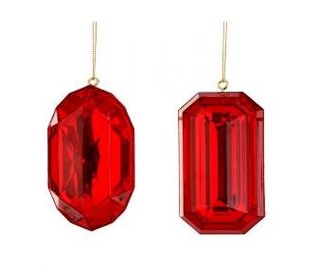The History of the Christmas Tree: From Pagan Roots to a Global Tradition
The History of the Christmas Tree: From Pagan Roots to a Global Tradition
The Christmas tree, adorned with twinkling lights and colorful ornaments, is a beloved symbol of the holiday season. But have you ever wondered about the origins of this festive tradition? Let's delve into the fascinating history of the Christmas tree, tracing its roots from ancient customs to the global phenomenon it is today.
Ancient Beginnings
The history of the Christmas tree can be traced back to ancient civilizations long before the advent of Christianity. Evergreen plants held special significance for many cultures due to their ability to remain green throughout the harsh winter months. These plants symbolized life, renewal, and resilience.
- Egyptians: Ancient Egyptians celebrated the winter solstice by bringing green palm branches into their homes to honor the god Ra, who they believed was regaining strength.
- Romans: During the festival of Saturnalia, Romans decorated their homes with evergreen boughs and exchanged gifts to celebrate the winter solstice.
- Druids and Celts: In ancient Britain, Druids and Celts used evergreen boughs in their winter solstice rituals as symbols of everlasting life.
The Middle Ages and Christian Adoption
The practice of decorating with evergreens continued through the Middle Ages. However, it was in the early modern period that the tradition began to take on a form more recognizable as the Christmas tree.
- Germany: The Christmas tree tradition is often credited to medieval Germany. As early as the 16th century, Germans were bringing entire trees into their homes and decorating them. Martin Luther, the Protestant reformer, is said to have been the first to add lighted candles to a tree to recreate the brilliance of stars shining through evergreens.
Spread to Other Countries
The custom of decorating Christmas trees spread across Europe in the 18th and 19th centuries.
- England: The Christmas tree gained popularity in England after Queen Victoria and her German husband, Prince Albert, were depicted with their children around a Christmas tree in 1848. This image, published in the Illustrated London News, influenced many English families to adopt the tradition.
- United States: German settlers brought the Christmas tree tradition to America in the 18th century, but it wasn't until the 19th century that it became widespread. The image of Queen Victoria's family also inspired Americans, and the practice grew rapidly.
Modern Christmas Trees
Today, the Christmas tree is a central symbol of Christmas celebrations around the world. While the specific customs and styles of decoration vary from country to country, the essence of the tradition remains the same: a festive evergreen adorned with lights, ornaments, and often a star or angel at the top.
- Types of Trees: In modern times, both real and artificial trees are used. Real trees, such as fir, spruce, and pine, are prized for their natural beauty and fragrance. Artificial trees, introduced in the 20th century, offer convenience and reusability.
- Decorations: Tree decorations have evolved from simple candles and homemade ornaments to a wide array of options, including electric lights, tinsel, glass baubles, and themed ornaments.
Symbolism and Significance
The Christmas tree holds deep symbolic meaning for many people. It represents the eternal nature of life, hope, and the joy of the holiday season. The act of decorating the tree is often a cherished family tradition, bringing people together to celebrate and create lasting memories.
Conclusion
The history of the Christmas tree is a rich tapestry woven from ancient traditions, cultural exchanges, and evolving customs. From its pagan roots to its status as a beloved holiday icon, the Christmas tree has journeyed through centuries to become a symbol of joy, unity, and festive cheer. As you decorate your tree this year, take a moment to reflect on its storied past and the shared history that continues to bring people together in celebration.



